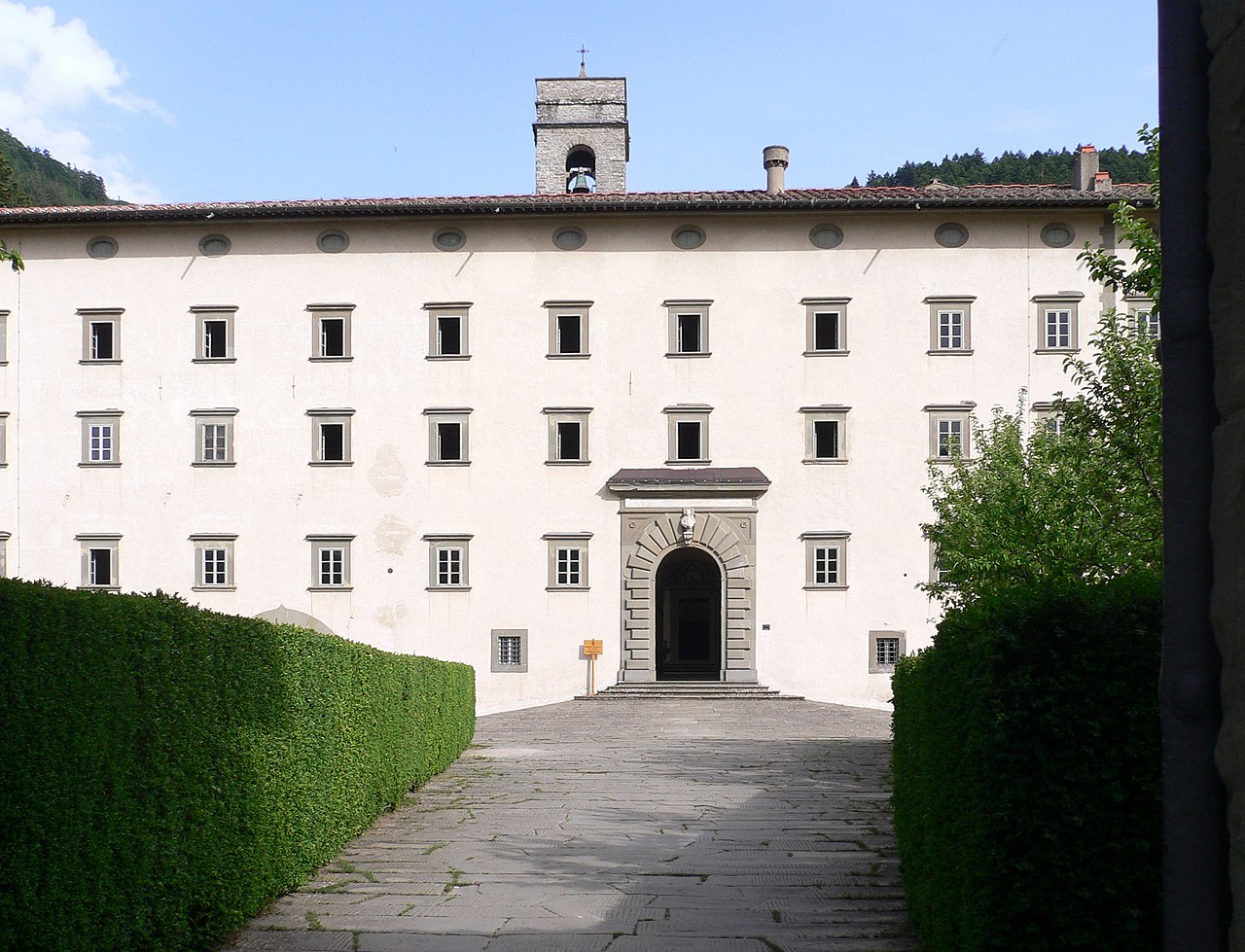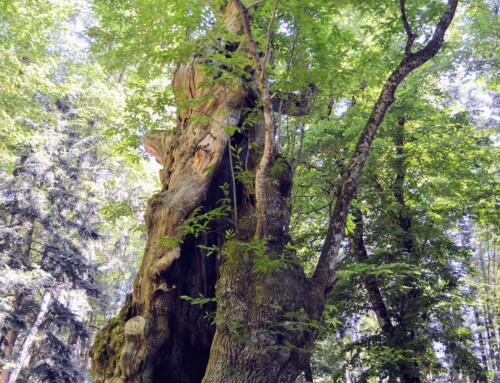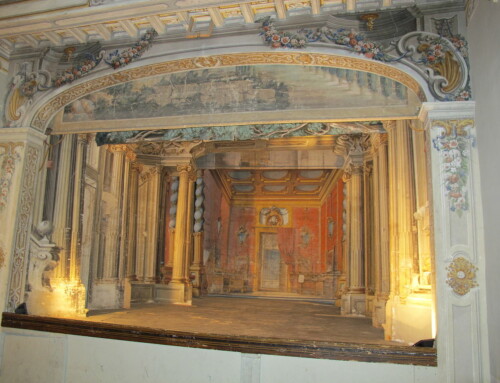Vallombrosa Valley : among woods and sacredness

Vallombrosa, located in the municipality of Reggello, is a destination that combines natural beauty and spiritual history. It is home to the State Biogenetic Nature Reserve, famous for its forests and scenic trails. Vallombrosa Abbey, founded in the 11th century, is a symbol of simplicity and meditation. The 'Circuit of Chapels' and Paradisino offer paths of reflection surrounded by nature. Vallombrosa and Saltino were famous health resorts in the 19th century. In the 1960s, a tourism revival was attempted with a ski resort, but without success. The Vallombrosa Arboretum, founded in 1870, is a valuable botanical collection.
Explore Vallombrosa from Poggio del Drago!
Vallombrosa, located on the northwestern slopes of Pratomagno in the municipality of Reggello, is a fascinating destination that combines natural beauty with a rich spiritual history. This Tuscan resort is home to the State Biogenetic Nature Reserve, an oasis of tranquility and biodiversity, famous for its lush forests and varied flora. Vallombrosa is not only a paradise for nature lovers and trekkers, thanks to its many scenic trails, but also a place of great historical and religious interest. The Abbey of the Vallombrosian monks, founded by St. John Gualbert in the 11th century, is a remarkable national monument, a symbol of simplicity, poverty and meditation. Here, visitors can explore the Museum of Sacred Art and immerse themselves in the contemplative quiet of the ‘Circuit of Chapels,’ making Vallombrosa an ideal destination for a rejuvenating trip to Valdarno.
The Forest and Nature Reserve
The Vallombrosa Forest, an integral part of the State Biogenetic Nature Reserve, is a true natural jewel located in the municipality of Reggello. This beautiful forest offers an unspoiled environment, ideal for hiking and outdoor activities. The Experimental Arboreta, with its vast collection of about 5,000 specimens of more than 700 tree and shrub species, is a landmark for scientific research and biodiversity conservation. Trails through the reserve, such as the famous “Ring of Giants,” lead visitors through breathtaking landscapes until they encounter the two tallest trees in Italy, including a 62.45-meter Douglas fir. The forest, with its vast meadows and summer coolness, is a perfect retreat for Florence residents and tourists seeking relaxation and contact with nature.
The Abbey of Vallombrosa
Vallombrosa Abbey, founded by St. John Gualbert in the 11th century, is the spiritual and historical heart of Vallombrosa. Located among the lush forests of Pratomagno, the abbey is an extraordinary example of monastic architecture, characterized by a harmonious combination of austerity and beauty. The Vallombrosian monks, followers of the teachings of John Gualbert, lived by the principles of simplicity, poverty, meditation and work. This way of life has left a lasting imprint on the abbey complex, visible in its sober structures and in the atmosphere of recollection there. Inside the abbey is the Museum of Sacred Art, which houses a valuable collection of religious works and liturgical objects. The complex also offers visitors the opportunity to walk the ‘Circuit of Chapels,’ a spiritual itinerary immersed in the nature surrounding the abbey, perfect for meditation and reflection.
The Circuit of Chapels and the Paradise
The ‘Circuit of Chapels’ is a fascinating route that surrounds Vallombrosa Abbey, offering a unique experience of meditation and reflection surrounded by nature. This itinerary, which winds through a series of historic chapels, allows visitors to explore various spiritual and scenic points of interest. Each chapel tells a part of the religious history of the place, creating a journey through time and faith. One of the most striking stops on the circuit is the Paradisino, also known as Eremo delle Celle. Located in an elevated position, the Paradisino offers a breathtaking panoramic view of the valley below, making it an ideal place for contemplation and prayer. This hermitage, with its stillness and beauty, perfectly embodies the spirit of Vallombrosa, combining spiritual introspection with the majesty of Tuscan nature, giving visitors an unforgettable experience.
Vallombrosa and Saltino: History of a Climatic Station
Vallombrosa and the nearby hamlet of Saltino are known for their history as a health resort, a reputation that dates back to the second half of the 19th century. Thanks to the fresh, healthy mountain air, these resorts became a popular retreat for vacationers, reaching the height of popularity in the early 20th century. The construction of the Sant’Ellero-Saltino railway, now decommissioned, facilitated access to this mountain destination, attracting many tourists, especially from Florence. However, the annexation of Trentino after World War I and the growing attraction of the Alps led to a decline in interest in Vallombrosa and Saltino, relegating them to destinations of local interest. Despite this, their history as health resorts remains a fascinating chapter in their past, evidenced by the historic villas and tranquil atmosphere that still pervades these resorts, making them ideal for a rejuvenating getaway.
The Attempt at Tourist Revival in the 1960s
In the 1960s, Vallombrosa attempted to reinvigorate its tourist appeal through the construction of a ski resort on Mount Secchieta. This ambitious project aimed to transform the resort into a high-end winter sports destination, taking advantage of its proximity to Florence to attract large numbers of visitors. However, the ski resort ran into numerous difficulties, including the constant lack of snow and the absence of adequate slopes for the slopes. These problems prevented the resort from really taking off. Eventually, the final closure of the ski facilities took place in 1986, without ever having achieved the success it had hoped for. Moreover, the project was the subject of lively controversy because of the potential environmental damage it would cause. Today, Vallombrosa continues to be appreciated for its natural beauty and tranquility, despite the failure of the ski project.
The Arboretum of Vallombrosa
The Vallombrosa Arboretum is one of Italy’s most important botanical collections, founded in 1870 by Adolfo di Bérenger, the first director of the Royal Forestry Institute of Vallombrosa. Located at about 950 meters above sea level, this arboretum covers siliceous soil among chestnut and beech forests, providing an ideal environment for the growth of a wide range of plant species. Currently, the arboretum is home to about 5,000 specimens divided into more than 700 tree and shrub species, creating an open-air laboratory for scientific and experimental studies. Divided into seven sections, each created under the direction of different curators, the arboretum represents a living chronology of Italian botanical research. Each section reflects the era and scientific goals of its time, making the arboretum not only a place of outstanding natural beauty, but also an important resource for biodiversity conservation and environmental education.
Abbey Art and Architecture
Vallombrosa Abbey is a masterpiece of monastic architecture that reflects centuries of history, art and spirituality. Founded in the 11th century, the abbey has undergone numerous transformations that have enriched its structure and aesthetics. The austere facade, punctuated by windows and decorated with coats of arms, is the work of Gherardo Silvani and dates from the 17th century. Inside, the abbey church retains the “T” plan typical of Vallombrosian churches, but 18th-century Baroque decorations dominate its appearance. Artworks include Cesare Dandini’s Conversion of Saul and Lorenzo Lippi’s Trinity, as well as a 15th-century wooden choir by Francesco di Nanni da Poggibonsi. The Renaissance sacristy and cloister of the Meridiana, with its elegant architecture, add further charm to the complex. The rich collection of paintings, sculptures and works of sacred art makes the abbey a cultural and spiritual treasure, evidence of a glorious past.
Stay in Vallombrosa: B&B Country House Poggio del Drago
For those wishing to explore Vallombrosa and its surroundings, the B&B Country House Poggio del Drago is an ideal choice of stay. Located just 50 kilometers from Vallombrosa, this charming bed and breakfast offers a cozy and relaxing atmosphere, nestled in the beautiful Tuscan countryside. Poggio del Drago is renowned for its hospitality and comfortable rooms, perfect for resting after a day of hiking and cultural visits. The proximity to Vallombrosa allows guests to easily explore the nature reserve, the abbey and the many hiking trails, combining the pleasure of nature with the comfort of quality accommodation. In addition, the B&B is an ideal starting point for discovering other attractions in Valdarno and Tuscany, offering a quiet and convenient base for a vacation of discovery and relaxation.




